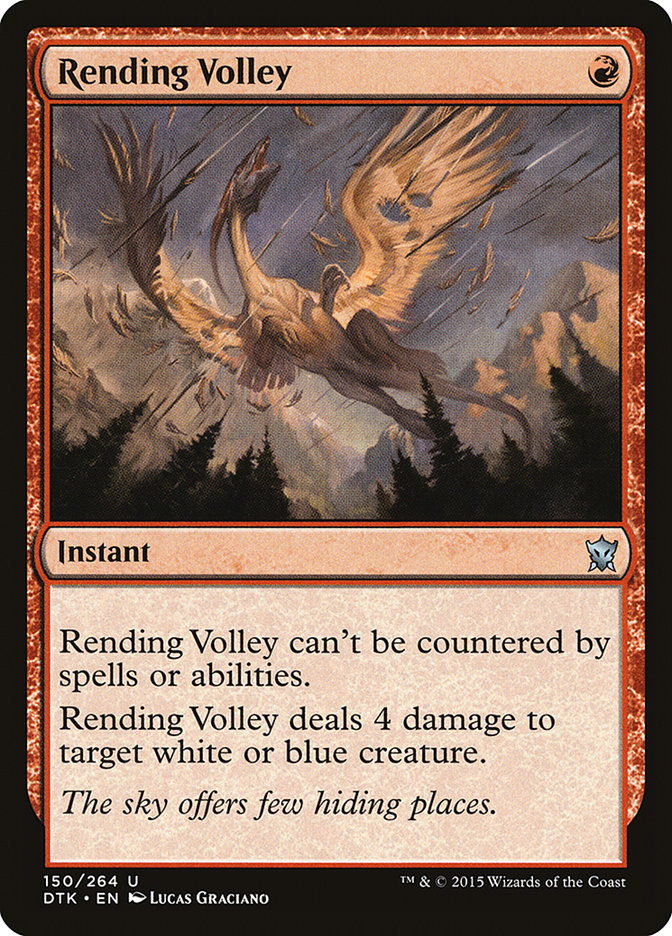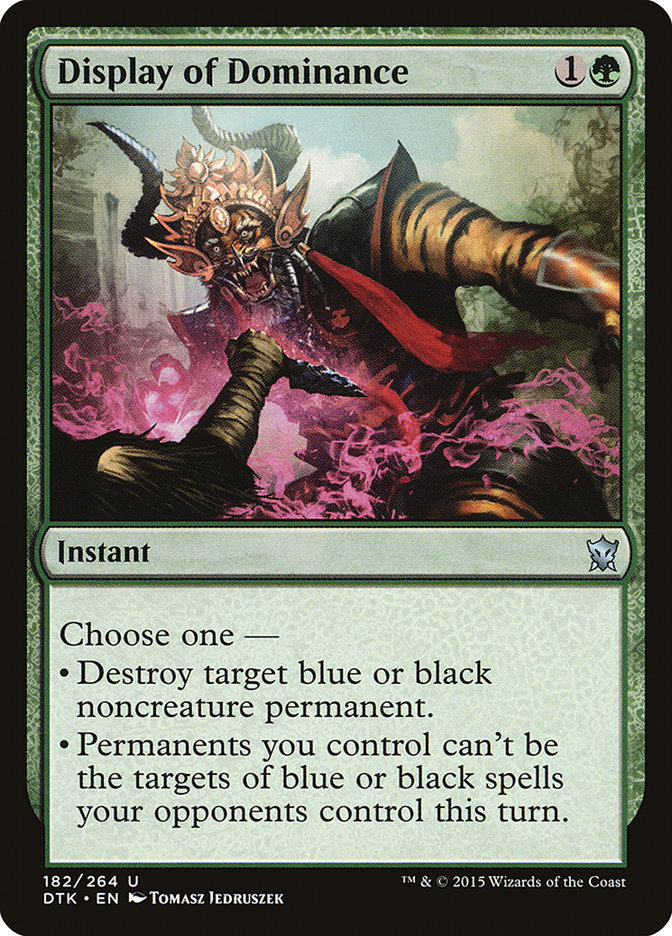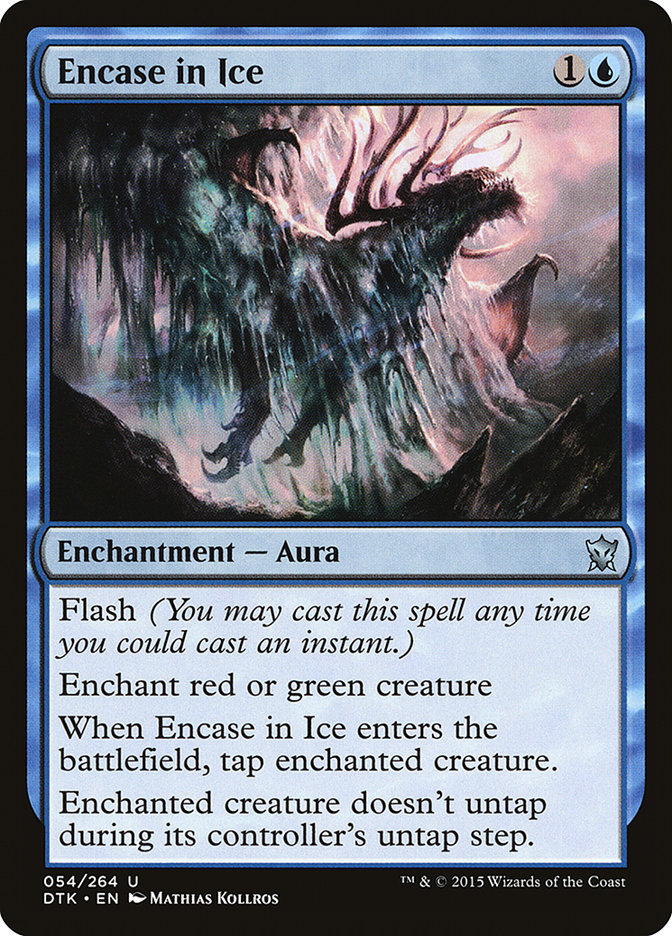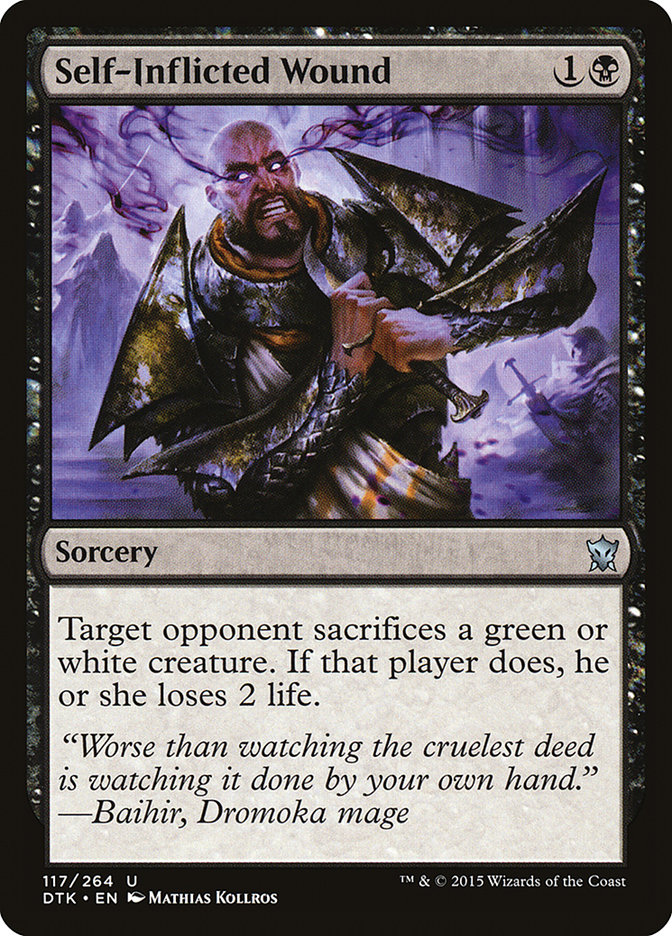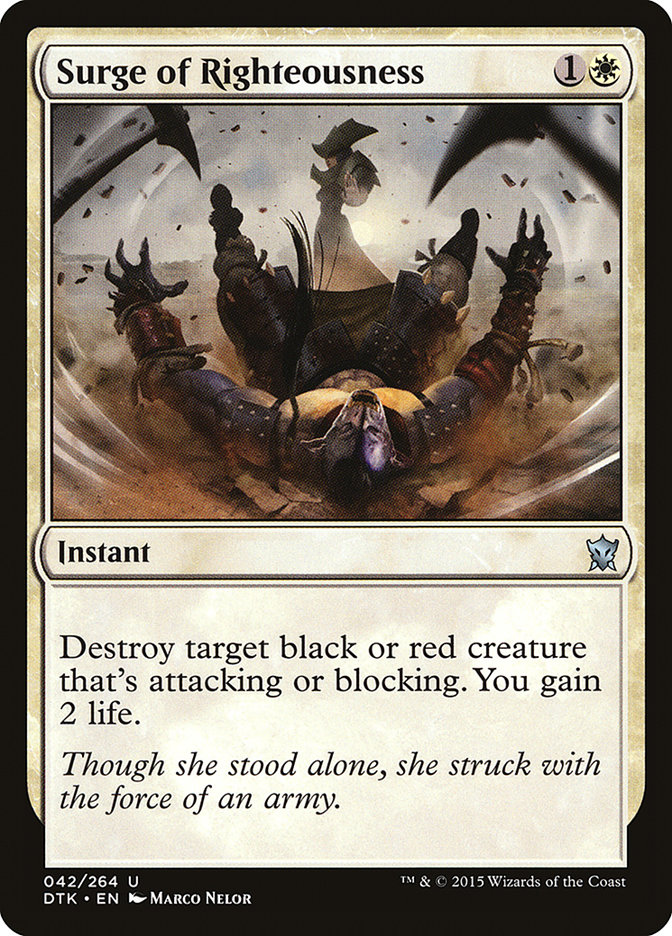Week one. Dragons of Tarkir. Season One Invitational.
We’ve never seen this happen. The Season One Invitational, which hosts the Open Series’ best, will have to battle it out on the same day a brand new set is
released. This means that every single player in the main event will be battling in unknown territory. Many will try to map out a battle plan. Many will
fail, some will succeed, but uncertainty is the constant. This type of preparation is by far the most exciting for me. Everything you could imagine is
going to be thrown at you, so you best be prepared to throw everything back.
Because of the unusual nature of this particular tournament, I think it’s more important than ever to be more focused on a plan and a sideboard that better
supports that plan. While having subjectively powerful sideboard options is good and all, more attention needs to be paid to addressing your deck’s
weaknesses while not compromising the primary function of your deck. It’s way too easy to get sidetracked with a ton of seemingly great sideboard options,
overcompensating for certain matchups, or getting too fixated on the function of a specific card.
When building a sideboard for this specific week, one of the things I’m going to look for is how many decks are going to be upgrades of pre-existing decks.
This is one of the easiest ways to decipher part of what might be going on and could be a big influence in figuring out what your deck may be soft to. When
looking for possible new combinations of cards, see if you can build the best version of the deck that utilizes those cards. Is Narset Transcendent best
with control cards, or in a deck that wants to cast Stoke the Flames? Once you find that out, see how it fares against your deck. If it doesn’t look too
good for you and you also think that decks like that will be played at a reasonable enough frequency, then looking at sideboard options will be in order.
Which sideboard cards have the most overlap without being too contorted toward one unnecessary factor? Roast is a great card against Siege Rhino, but if
you’re already good against Rhinos, then you may not want it in your sideboard to shore up that matchup, especially if you need to figure out how to beat
Stormbreath Dragon. If Ultimate Price shores up your Stormbreath Dragon weakness, consider something more broad for dealing with decks that attack wide, as
Ultimate Price looks pretty flimsy against Hordeling Outburst.
The “I Board it in Every Game” Trap
This is one of the biggest pieces of flawed logic out there when it comes to sideboarding theory. If a card in your sideboard goes into the maindeck after
game 1 the majority of the time, why not just maindeck it? There are a few reasons for this, but one of the major ones is how the sideboard card in
question completely shifts the dynamic of which your initial gameplan tries to be. Fleecemane Lion was put into the sideboard of Abzan Midrange because
players got used to sideboarding out all of their clunky removal or dead Lightning Strikes against it. Now they’re stuck having to deal with a Lion that’s
threatening to go monstrous, or just beating them down to no end.
Another major reason for these kinds of sideboard cards is for sidestepping very powerful hate. You know your opponent is going to bring in all of their
enchantment hate against your Jeskai Ascendancy Tokens deck, as well as Drown in Sorrow, for the nail in the coffin. Well, what if we take out Jeskai
Ascendancy altogether and board into four Mantis Riders? You get to kill two birds with one 3/3 flier, and you alleviate the pressure your 1/1s may have
from the large amount of hate you may have to slog through.
Attack Their Post-Board Plan, Not Their Pre-Board Plan
This ties into the previous point, but a very common mistake is reacting to what your opponent did in game 1 when you should be reacting to what
your opponent is doing in game 2. Furthermore, it’s also a mistake to not, at the very least, review and revise your plan in game 3.
For example, let’s play against the same Abzan Midrange deck as R/W Aggro. Do you sideboard out your Lightning Strikes? What if they don’t have Fleecemane
Lion in the first place? Is that three damage going to set you further ahead than the potential cards you could’ve brought in?
Hint: The only correct answer to that question is “it depends.”
It depends on how the rest of your sideboard is configured. It depends on how aggressive or conservative you are with sideboarding in general. If they
don’t do the “fifteen in, fifteen out” tactic, it depends on how many cards you may see them take out and put in. It depends on how common of an occurrence
it is in the tournament that you’re playing in. It depends on many other factors that both you and I are assuredly missing from this equation, but the
point is clear. Static sideboarding is flawed and is a fundamental bad habit.
Game 3 sideboarding is also incredibly important, especially when it comes to Standard. If you did ultimately decide to take out those Lightning Strikes,
and they did have Fleecemane Lion, what do you do now? Strategically speaking, the snap-reaction would be to just side them back in. However, you already
had the mindset going in that you didn’t need them in game 2. What cards do you take out now? Do you have enough ways to alleviate the strain on your
entire seventy-five to make this move in the first place? Are you taking away from your primary gameplan at all, regardless of if that gameplan changed in
games 1 and/or 2?
No static sideboard guide will help you with that, and that’s just scratching the surface.
Don’t Board Scared
There are going to be cards that you’re going to have a hard time beating if you don’t have the configuration to do so. This doesn’t mean that you should
leave in cards that are bad in the matchup if you can help it. Just because you lost to an uncontested Brimaz, King of Oreskos in the R/W Aggro mirror
doesn’t necessarily mean those Valorous Stances are going to be effective in the matchup. Sometimes your opponent is going to have a card that you can’t
beat. That’s okay. Playing like they don’t even have it in their deck is a perfectly fine option. Mono-Red decks seldom beat the card Master of Waves, that
didn’t keep the deck from winning tournaments. In fact, every tournament you play in, there’s going to be someone with some card that you can’t beat.
Sideboarding in Dragons of Tarkir Standard is going to be rough, more than it has been for the entirety of Khans of Tarkir’s legality. These cards will
throw an entire wrench in how we view the building process.
But what is the building process to begin with? Like most things Magic, it depends, but you have to have a maindeck before working on your sideboard.
Despite many powerful new cards making themselves at home in Dragons of Tarkir, I think we’re going to see much more robust versions of what we’ve been
seeing. I’d definitely expect more Abzan and blue control variants, with a big spike on the latter because of Narset Transcendent. I don’t think control is
the best shell for Narset, however. Stoke the Flames and proactive cards in general feel more beneficial to me. Narset is pretty bad when you’re behind on
board, as she doesn’t quite provide a way to catch you up the turn she comes down. That compels me to want to play her as similarly to a Domri Rade as
possible, so a tokens deck is my first inclination. Mono-Red has gotten a whole lot of tools, but I don’t think Lightning Berserker is as great as
advertised. There are definitely great ways to make it work, such as on turn 2 with Foundry-Street Denizen, then putting your opponent in a spot where
dashing it much later in the game will be very threatening, but jamming it as a four-of isn’t where I want to start. If Mono-Red is popular, then Mono-Blue
can perform well, even though Mono-Red has the tools to combat Mono-Blue much more effectively than before. I’m weary of Mono-Blue’s effectiveness against
Abzan Midrange or Blue control, however. This leads me to believe that Mono-Red can have a great showing on day two, but it’ll be rough for it on day one.
The other deck that looks pretty strong is Temur. I think the big reason to go Temur over G/R is your innate ability to dodge Ultimate Price. If that card
is going to be overrepresented, then sleeving up Savage Knuckleblade with Fanatic of Xenagos while having residual effects in Thunderbreak Regent seems
like a solid formula. If I am going to play more mono-colored creatures, the Boon Satyr and Surrak, the Hunt Caller combo is a great way to command the
pace of the game. Backing all of that up with Stubborn Denial is always strong, and Sarkhan Unbroken adds a new dimension to the deck for the longer game.
Devotion decks will certainly be around, and Deathmist Raptor seems like a nice fit for the G/W builds, while Dragonlord Atarka seems almost unbeatable
when resolved early against anything playing “fair.” I think the card to look out for is Shaman of Forgotten Ways. It doesn’t provide much devotion, but it
doesn’t need to since it gives you a hefty amount of mana to begin with. Its formidable ability is going to be activated much more than we think as well.
Then, there’s Legacy. While I don’t feel that Dragons of Tarkir will have a major impact on Legacy immediately, it’ll still be tough trying to choose a
deck. Many of the Legacy Premier IQs have had a little bit of everything, so the format feels pretty wide open. I’ll probably just jam some form of Show
and Tell like I always do, but I definitely feel that Omni-Tell is better positioned than Sneak and Show. Reanimator is also an option, but I’ve little
experience with that. Invitationals always feel very fair, however. In a field of fairness, I want to be as unfair as possible.
I don’t think I’ve been more excited to play in an Invitational. They’re always one of the most fun tournaments you can play in, but given the
extraordinary circumstances, seeing everything unfold before us is going to be amazing.
What do you have planned for Standard?


